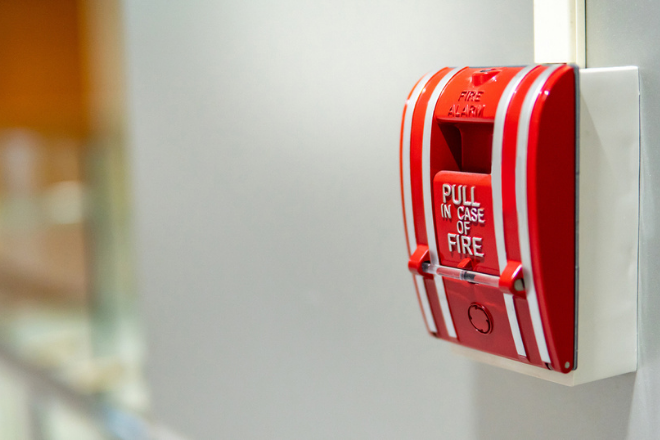Article by Michael Dorn, Safe Havens International
One of the many challenges the COVID pandemic has created for independent schools is effectively conducting emergency drills while addressing public health concerns. Fortunately, addressing these challenges can also enhance students’ and staff’s ability to better prepare for emergencies after the pandemic has passed.
While students and staff need to maintain physical distancing at this time to prevent the spread of COVID-19, we don’t want create “training scars,” or habits that will make our practices less effective upon return to normalcy. Training scars are caused by accidental operant conditioning, or repeated practice under set conditions. One example would be spacing out too far during an evacuation from an actual fire because social distancing was used in fire drills during the pandemic. This could result in delays and serious consequences.
While students and staff need to maintain physical distancing at this time to prevent the spread of COVID-19, we don’t want create “training scars,” or habits that will make our practices less effective upon return to normalcy.
The effects of unintentional training scars can be surprisingly powerful and deadly, as seen in the nation’s most deadly school attack. In 1958, 95 students and staff died as the result of an arson fire at the Our Lady of Angels Sacred Hearts School in Chicago. Many of the school’s teachers had accidentally been conditioned to wait in their classrooms until the fire alarm sounded because the headmaster was the person who activated the fire alarm for each month’s fire drill. This resulted in many teachers delaying evacuation for approximately five minutes when the alarm was finally sounded. Deadly training scars have been noted more recently in severe failures of popular multi-option active shooter training programs, resulting in increased casualties, deaths and more than 150 civil actions and letters of intent to sue being filed for several of these shootings to date.
If allowed by your state’s drill requirements, these options may be helpful:
- Delay drills until later in the school year while providing very clear step-by-step instructions for each emergency protective action; use photographs or, even more effective, short videos depicting the correct ways to perform each emergency protective action (filmed with role players wearing masks/PPE).
- Conduct drills in a room-by-room and staggered fashion rather than the entire school. During fire evacuation, reverse evacuation, severe weather and room-clear drills, individual teachers provide verbal instructions, making it easier to accommodate social distancing requirements. Administrators can dramatically improve staff’s ability to respond effectively to actual emergencies if they present teachers with scripted scenarios that should prompt a specific type of emergency protective action. In this approach, the staff member is not told which emergency protocol is to be implemented and has to decide which protocol(s) to implement based on the scenario presented. For example, when given a scenario of smoke pouring out of the ceiling of the classroom, a teacher should rapidly evacuate students by way of the nearest exit, activate the nearest fire alarm, and simulate making a backup call to 911 and calling an administrator. If this technique is used, prior notification of appropriate personnel such as the school’s fire alarm monitoring service, key administrators, etc. regarding the staggered activity is important.
- When hallway width allows, training students to walk in double rows while moving to safety can keep lines shorter and improve line of sight for teachers supervising students. This technique can also reduce the time of movement to safety by roughly 30%.
- Emphasize “preventive” or “soft” lockdown drills over “emergency” lockdown drills. A soft lockdown is used for situations where one or more persons are acting in a highly concerning manner but there is no indication that they are armed. This type of lockdown is appropriate for the majority of situations where schools need to perform a lockdown and typically allows for instruction to continue with students in their typical locations while hallways are cleared and instructional and work areas are locked. We recommend this be the most frequently drilled form of lockdown, as this lockdown can be one of the most effective ways to prevent a situation from escalating. In addition, focusing on lockdown only for dire situations such as an active shooter event has been found to increase the likelihood that staff will fail to lockdown for many situations where it would be important for a lockdown to be implemented.
Remind teachers and support staff on a weekly basis that they will need to instruct students that adjustments for COVID made during drills could significantly reduce safety should an actual emergency occur.
- Reduce the chance of accidental operant conditioning from training scars by briefing students on emergency protective actions with clear age and developmentally appropriate language.
- Remind teachers and support staff on a weekly basis that they will need to instruct students that adjustments for COVID made during drills could significantly reduce safety should an actual emergency occur. For example, teachers should remind students that in an actual emergency, students should prioritize evacuating quickly over physical distancing. Providing staff with sample language for these instructions can be helpful.
- Once it is safe to return to pre-COVID school operations, conduct and document one of each type of drill in a single day or week with normal spacing between students supplemented by instructions using clear age and developmentally appropriate language to reinforce proper movement and distancing.





